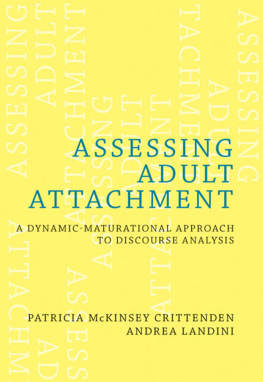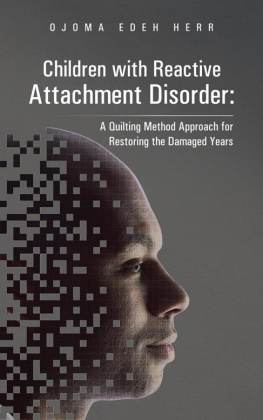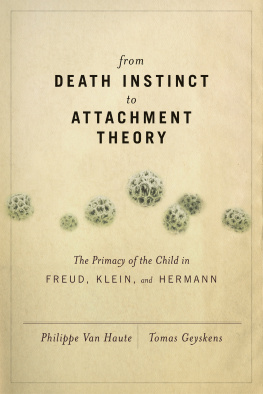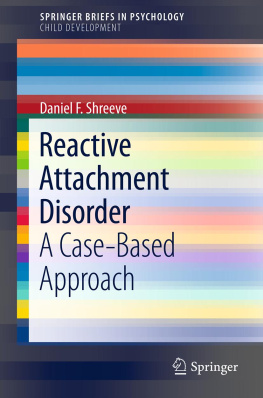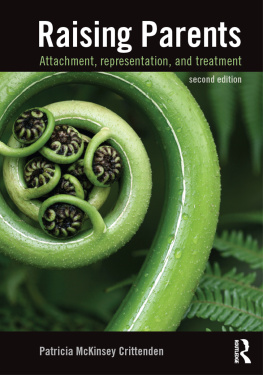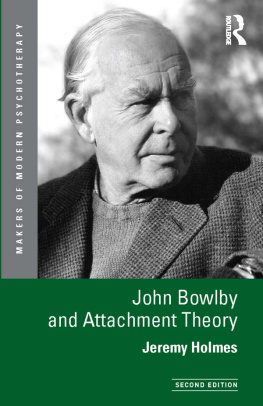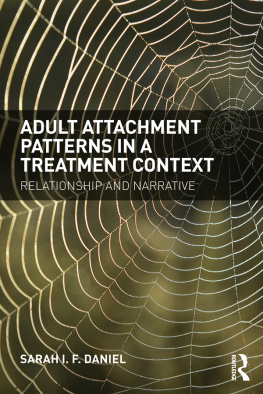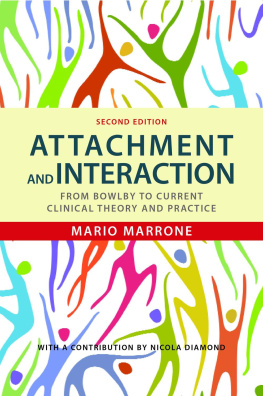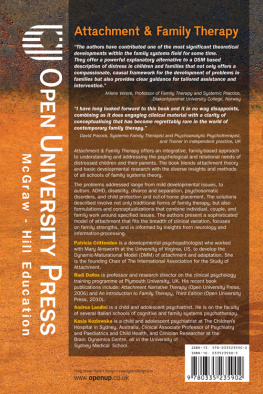Crittenden Patricia McKinsey - Assessing adult attachment : a dynamic-maturational approach to discourse analysis
Here you can read online Crittenden Patricia McKinsey - Assessing adult attachment : a dynamic-maturational approach to discourse analysis full text of the book (entire story) in english for free. Download pdf and epub, get meaning, cover and reviews about this ebook. year: 2011, publisher: W. W. Norton & Company, genre: Home and family. Description of the work, (preface) as well as reviews are available. Best literature library LitArk.com created for fans of good reading and offers a wide selection of genres:
Romance novel
Science fiction
Adventure
Detective
Science
History
Home and family
Prose
Art
Politics
Computer
Non-fiction
Religion
Business
Children
Humor
Choose a favorite category and find really read worthwhile books. Enjoy immersion in the world of imagination, feel the emotions of the characters or learn something new for yourself, make an fascinating discovery.
- Book:Assessing adult attachment : a dynamic-maturational approach to discourse analysis
- Author:
- Publisher:W. W. Norton & Company
- Genre:
- Year:2011
- Rating:4 / 5
- Favourites:Add to favourites
- Your mark:
Assessing adult attachment : a dynamic-maturational approach to discourse analysis: summary, description and annotation
We offer to read an annotation, description, summary or preface (depends on what the author of the book "Assessing adult attachment : a dynamic-maturational approach to discourse analysis" wrote himself). If you haven't found the necessary information about the book — write in the comments, we will try to find it.
Crittenden and Landini describe a method for identifying the psychological and interpersonal self-protective attachment strategies of adults by applying discourse analysis to semi-structured interviews. This method was developed in a multi-cultural context with special attention to the needs and characteristics of vulnerable and troubled adults, i.e., those exposed to the threats of low income, limited education, family conflict, and physical and psychological trauma. Based on Bowlbys notion of comparing individuals multiple verbal representations (Bowlby, 1980), the method systematically probes different memory systems (Schacter & Tulving, 1994) to elicit representations of the relation of self to context.
The method is ideally attuned to The Adult Attachment Interview (AAI, George, Kaplan, & Main, 1984, 1985, 1996), but other interviews, e.g., The Parents Interview (Crittenden, 1981) that probe memory systems systematically are equally amenable to analysis.
The method employs the Dynamic-Maturational Model of Attachment and Adaptation (DMM). Central ideas are (1) the importance of exposure to danger in shaping mental and behavioral functioning, (2) the organized self-protective function of behavior that others have found inexplicable and unclassifiable, (3) representation of these functions in the preconscious construction of language, and (4) the dynamic and interactive quality of representation.
Ainsworths ABC patterns of infant attachment are the starting point from which the authors blaze a life-span view of adaptation that is both intuitively simple in structure and also complexly nuanced in execution. The DMM transforms attachment theory from a truth stuck in the late twentieth century to a process for posing questions suited to current science and a theory poised to accommodate future discoveries.
DMM discourse analysis encompasses ideas as revolutionary as neurolinguistics once was and as fresh as the current revolution in the cognitive neurosciences. The method permits users to draw new and richer meanings from existing assessment tools, including reanalyzing existing AAI protocols. The outcome can change our understanding of interpersonal difficulty, psychiatric disorder, and criminal behavior.
Whether used as a guide to treatment formulation or a basis for gathering empirical data, the book is a must for clinicians and researchers alike. --Book Jacket. Read more...
Abstract: A method for identifying the psychological and interpersonal self-protective attachment strategies of adults. Read more...
Crittenden Patricia McKinsey: author's other books
Who wrote Assessing adult attachment : a dynamic-maturational approach to discourse analysis? Find out the surname, the name of the author of the book and a list of all author's works by series.

